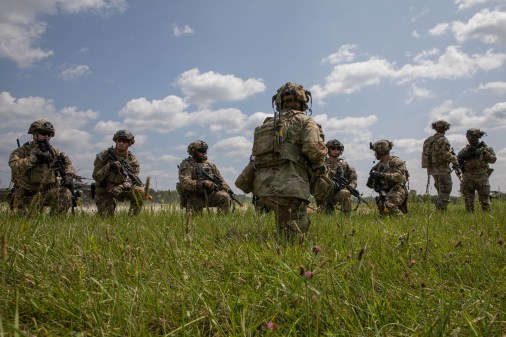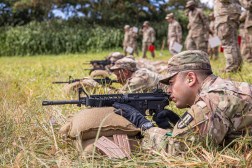Army looking at what a division commander needs for next iterative tactical network build

The Army is looking at several possible architectural alterations as it begins designing its tactical network for the division level instead of brigade formations, as part of the larger structural shift in the service.
The build, slated for 2025, will be the first to focus on the division holistically as the Army sets its sights on nation-states and shifts to the division as the main unit of action rather than the brigade, as it was during the global war on terrorism.
The Army has adopted a multiyear strategy involving the incremental development and delivery of new capabilities to its integrated tactical network, involving a combination of program-of-record systems and commercial off-the-shelf tools. Those capability sets now provide technologies to units every two years, each building upon the previous delivery. Capability Set 21 was primarily designed for infantry brigades; Capability Set 23 is focused on Stryker brigades, and Capability Set 25 is focused on armored brigades.
Fiscal 2023 is the first year of design for Capability Set 25 with a preliminary design review set for the April or May timeframe, which locks in the experimentation architecture, Matt Maier, project manager for interoperability, integration and services at Program Executive Office Command, Control, Communications-Tactical, told DefenseScoop in an interview.
“If the Army is moving toward reinforced armored divisions as their unit of action for the Army of 2030 and we have to make sure that the [capability set] that we have easily translates to those types of units and the types of missions that they have,” Maier said. “Our focus right now is not only reducing the complexity at the brigade and below level, but also maybe migrating some of those functions that exist currently at the brigade level up to the division level so they can do more unit of action work at their main attack and rear type units. I think you’re going to see some shifting in the architecture as a result of that as we move towards the Army of 2030.”
The Army has been prepping for some time for this, figuring out what needs to be scaled and what information a division commander needs. Specifically, it is looking at what the division commander needs to command and control all the forces below, how to integrate on different platforms – such as armored vehicles, which pose significant integration challenges – and how to architect secure but unclassified communications at which echelon within the division.
“When you’re talking the division as the unit of action, what you’re really asking yourself is what does the division commander need to C2 his entire division? That’s really a game changer and a shift back to the future for commanders to command their entire division and what does that network need to look like,” Col. Shermoan Daiyaan, project manager for tactical radios at PEO C3T, told DefenseScoop.
Work has already begun on integration to armored platforms. Daiyaan said at Project Convergence 22, the Army integrated HMS Manpack radios onto Abrams tanks learning how to integrate them and get them wired.
When it comes to the secure but unclassified capability, Daiyaan said the Army is determining what radios and capabilities no longer need to be at the battalion or brigade level and can be moved up and simplified.
The Army, when initially designing the integrated tactical network, implemented a secure but unclassified capability, which is underpinned by encryption, as a means of allowing soldiers to move faster on the battlefield and share with partners easier. Oftentimes, classification can bog down partner sharing and operations. But the Army determined that much of the tactical information is perishable and thus, doesn’t need the same rigorous classification to guard it in real-time.
Daiyaan said they’re expecting to have the first exercise for the division as the unit of action with ITN equipment in the April timeframe at the Joint Readiness Training Center with the 82nd Airborne division. The network team has provided them what they think the division as the unit of action needs from an ITN standpoint.






